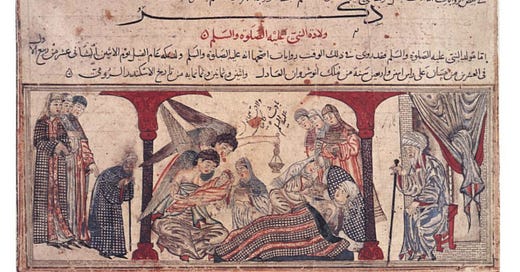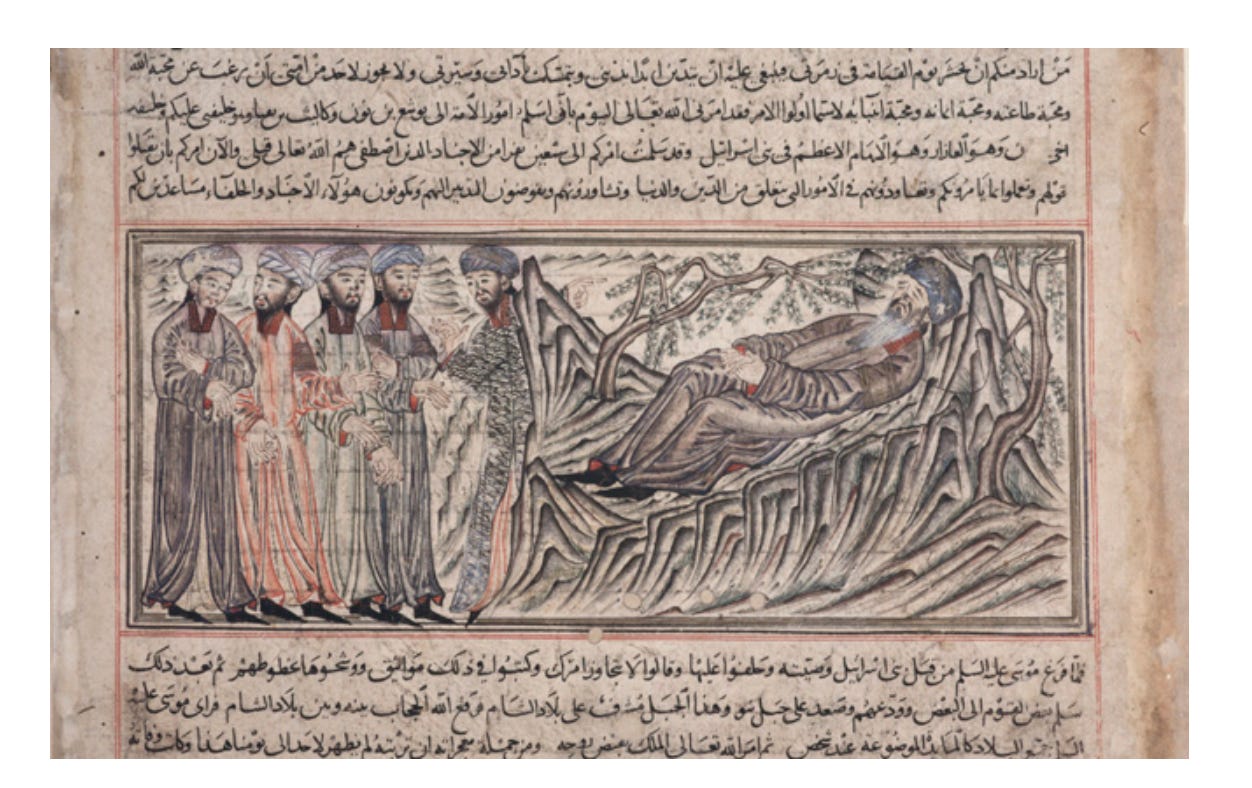The Nativity but where the birth is Prophet Muhammad's
A piece of art which serves the flexibility and exchange between even some of the most foundational stories of different religions.
This article was originally published as a twitter thread here.
It's December tomorrow and performances of the Nativity will be aplenty. But in the C13/14th a very different representation was created. In one of the most incredible exchanges of religious cultures: Muslims adopted scene of the Nativity to represent Prophet Muhammad's birth.
Where did this happen? Tabriz was one of the great cosmopolitan cities within the Mongol Empire. A hub of trade and cultural exchange. Marco Polo said it was a 'great and noble city' and highlighted its plurality of religions.
It was here where Ilkhanid vizier Rashid al-Din working with Muslim historians, wrote the Jāmiʿ al-tavārīkh( Compendium of Chronicles), which was commissioned by Mongol leader Ghazan. Rashid al-Din was born into Persian Jewish family from Hamadan but converted to Islam aged 30.
The Chronicle was largely split into two parts:
1. History of Mongol/Turkish tribes, and history of Mongols from Genghis Khan up to death of Ghazan.
2. History of non-Mongol peoples of Eurasia, which became a universal history from time of Creation.
So how did these Muslim historians illustrate scenes from the life of Muhammad - particularly his birth? By employing the plurality of sources available to them in Tabriz. And this significantly included Christian ones.
Politically this also spoke to the global vision of these artists and their Mongol patrons, ruling at its peak from the Sea of Japan to Eastern Europe (Hungary).
The artists thus turned to Christian devotional texts that Western travellers had brought to Tabriz and the Ilkhanid court. This produced one of the most remarkable images of religious cultural exchange in history.
The Nativity of Christ provided a composition for the birth of the Prophet of Muhammad.
Historian of Islamic Art Sir Thomas Arnold details how the scene transformed 'the Three Magi of the Christian story into waiting women and Joseph into the Prophet’s uncle'.
We do not know about any earlier illustrations of this subject in Islamic art.
This is only one example in which these Tabriz artists copied from Western sources to illustrate history of non-Mongol peoples. Another is “The Death of Moses”, whose setting is loosely modeled on “St John on Mt Patmos,”.
Here thus is an example of cultural exchange in Mongol Empire but more significantly a reflection of the flexibility and exchange between even some of the most foundational stories of different religions.




